The Earth is situated at a considerable distance from other celestial bodies in the universe. Scientists who study the cosmos primarily rely on light to investigate its mysteries. Light, the primary medium of information transmission, travels across the vast emptiness of space, carrying both energy and valuable data. However, various telescopes perceive the radiations emitted by celestial objects in distinctive manners. In this article, we will delve into the different approaches telescopes employ to capture the cosmic radiation and acquire valuable insights.
Explore the term “Hitech”
What is observed by astronomers through telescopes?
When astronomers gaze at celestial objects such as stars and galaxies, they are not only observing vast distances, but also peering into the past. This is because light requires time to travel, meaning that the image we see of a distant galaxy is actually a snapshot of what it looked like in the past. Take the Andromeda galaxy, for instance, which is approximately 2.5 million light years away from Earth. If an Earthling were to examine it through a telescope, they would perceive the galaxy as it appeared 2.5 million years ago.
If the Andromeda galaxy were to vanish a million years ago, it would take a long time for Earthlings to become aware of its disappearance. In order to witness the galaxy’s current state, Earthlings would have to wait another 2.5 million years and cast their gaze into the future.
What is the nature of light?
Light, which is perceived by human eyes as visible light, exists in various colors. The color of light is determined by its wavelength, which falls within the range of 400 to 700 nm, corresponding to colors from violet to red. Surrounding humans are electromagnetic radiations with wavelengths shorter than 400 nm or longer than 700 nm, but they are not visible to the naked eye. The complete electromagnetic spectrum, depicting the full range of electromagnetic radiation, is illustrated in the diagram below.
The diversity of electromagnetic waves is vast, rendering humans practically blind. This becomes particularly evident when comparing the visible spectrum to the rest of the electromagnetic spectrum.
Visible light is just a fraction of the entire electromagnetic spectrum, which encompasses gamma rays with extremely short wavelengths and radio waves with incredibly long wavelengths.
What is the mechanism behind the emission of visible light from stars?
Similar to our Sun, stars emit light across a broad range of wavelengths, encompassing the visible spectrum and extending beyond. The analysis of a star’s light spectrum provides valuable insights for astronomers.
Ultraviolet wavelengths are predominantly emitted by certain extremely hot stars, while infrared light is emitted by certain extremely cool stars. There are objects that are exceptionally hot and emit X-rays and even gamma rays. The light emitted by the faintest and most distant objects takes the form of radio waves. In fact, many of the objects that astronomers find most intriguing today are not visible to the naked eye. Scientists rely on telescopes to detect faint light from remote objects and observe objects with various wavelengths across the electromagnetic spectrum. Different types of telescopes serve different purposes. The same celestial objects may appear differently when observed through these telescopes.
Now, let’s explore the various types of telescopes.
Optical telescopes and visible light
For centuries, people have been creating and utilizing lenses to enhance the magnification of various objects. Nevertheless, it wasn’t until the late 16th century that true telescopes emerged in Europe. By employing a dual lens system, these telescopes were able to enlarge and bring distant objects into clearer view. The credit for coining the term “telescope” goes to Galileo Galilei, an Italian scientist and mathematician who constructed the inaugural telescope in 1608 and went on to refine its design.
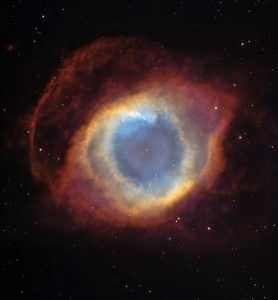
The Yerkes Observatory in Wisconsin, owned by the University of Chicago, is home to the world’s largest refractor telescope. This impressive instrument was constructed in 1897 and boasts a lens with a diameter of 102 centimeters.
Radio telescopes
In contrast to optical telescopes, which collect visible light, the largest telescopes in the world are designed to gather radio waves with longer wavelengths. Known as radio telescopes, these devices bear a striking resemblance to satellite dishes.
Prior to its tragic collapse last year, the world’s largest telescope was located at the Arecibo Observatory in Puerto Rico. Situated within a natural sinkhole formed by the dissolution of limestone rock due to underground water flow, this unique telescope was fixed in position and could only observe the portion of the sky directly above it.
Currently, a state-of-the-art astronomical observatory is being constructed on Mount Armasones in Chile, featuring the revolutionary Extremely Large Telescope (ELT) with a segmented mirror measuring 39.3 meters in diameter. This remarkable instrument comprises 798 hexagonal segments, each with a diameter of 1.4 meters.
The ELT’s mirror has the extraordinary capability to capture 15 times more light than any existing telescope. Additionally, it will be equipped with a groundbreaking adaptive optical system consisting of 5 mirrors, enabling it to compensate for atmospheric turbulence and produce images with an unprecedented level of detail, surpassing even the renowned Hubble Telescope in orbit.
The Very Large Array (VLA), located in New Mexico, USA, is the largest cluster of radio telescopes. Consisting of 27 individual telescopes, the VLA operates as a unified antenna array, working together to capture and analyze radio waves. Each of the telescopes has a diameter of 25 meters.
NASA’s Great Observatories: Exploring Space with Telescopes
One major limitation of Earth-based telescopes is the interference caused by the planet’s atmosphere. The atmosphere blocks certain wavelengths of electromagnetic radiation, such as infrared and ultraviolet light. Additionally, atmospheric movement distorts the light, causing stars to twinkle in the night sky.
To minimize these issues, numerous observatories are constructed at higher altitudes to reduce the amount of atmosphere above the telescope. Nevertheless, a more effective resolution is to utilize space telescopes that orbit beyond Earth’s atmosphere in space. These telescopes are outfitted with instruments designed to study celestial objects that emit various forms of electromagnetic radiation, including visible, infrared, and ultraviolet light, as well as X-rays and gamma rays.
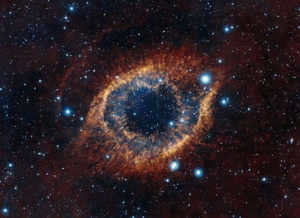
NASA scientists and engineers have successfully constructed and deployed four large observatories into orbit around the Earth. These observatories have been designed to observe various aspects of the universe across different segments of the electromagnetic spectrum.
The Hubble Space Telescope is widely recognized as one of the most renowned space telescopes. It maintains a stable orbit around the Earth, approximately 589 kilometers above its surface, and captures valuable data in the visible, infrared, and ultraviolet wavelengths.
In addition to the Hubble Telescope, NASA has also developed the Compton Gamma Ray Observatory, which focuses on the study of gamma rays within the universe. This observatory, named in tribute to Arthur Compton, a distinguished Nobel Prize-winning physicist, was launched aboard the space shuttle Atlantis in 1991 and remained active until June 4, 2000.
The Spitzer Space Infrared Telescope, the fourth member of the renowned “Great Observatories,” was successfully launched into orbit on August 25, 2003. At the time of its launch, Spitzer held the distinction of being the largest infrared telescope in existence. Although its refrigerant supply was depleted in 2009, the telescope continued to function partially. However, on January 30, 2020, the mission officially concluded, and the scientific equipment entered hibernation mode.
Discover more about telescopes and their fascinating capabilities!
A telescope is an optical instrument meticulously crafted for the purpose of observing celestial objects. One of the key determining factors of a telescope’s performance is the diameter of its lens. A larger lens diameter allows for brighter images and enables higher magnification when conducting observations.
Imagine we have two telescopes with lenses of different sizes, let’s say 100mm and 200mm. If we observe the same celestial object with the same magnification, we will notice that the image in the 200mm telescope appears 4 times brighter than in the 100mm telescope. This is because the larger mirror of the 200mm telescope collects more light. To put it in perspective, think of two cone-shaped funnels of different diameters standing in the rain – the larger funnel will collect more water. In comparison, a 70mm telescope lens collects 100 times more light than the human eye, while a 300mm telescope lens collects a staggering 1800 times more light.
Furthermore, the diameter of the lens also affects the resolving power of the telescope. A telescope with high resolving power allows you to see fine details, especially when observing and photographing planets or double stars.
What can be observed through a telescope in the night sky?
1) The Moon. Even with a modest 60…70mm telescope, one can observe numerous craters, seas, and mountain ranges on the lunar surface.
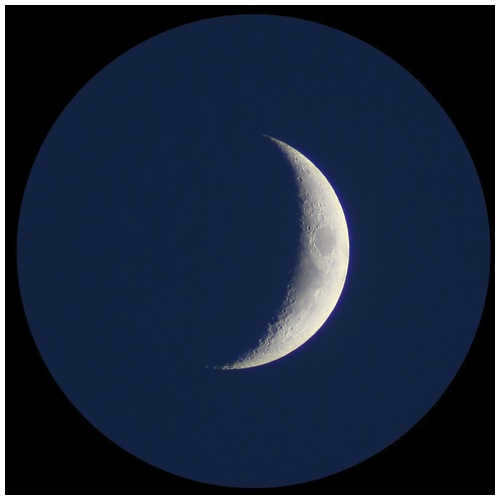
An observation of the Moon can be made using a telescope that has a magnification of 50x. When the moon is near its full phase, one can observe bright “rays” around the larger craters. Depending on the telescope’s specifications, the smallest observable craters can range from approximately 8 kilometers using a 60-70mm telescope to about 2 kilometers using a 200mm telescope due to its superior resolving power.
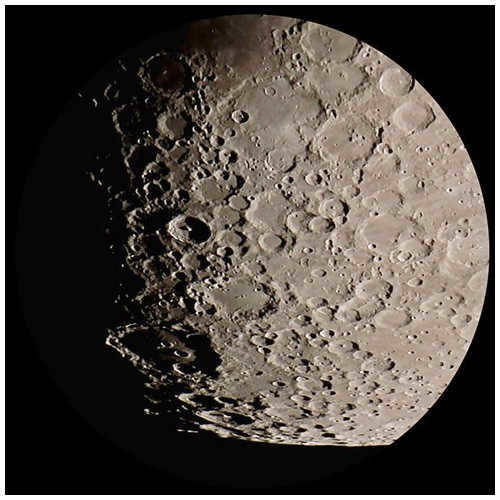
Observing the Moon through a telescope with a magnification of 200x reveals a captivating sight.
2) Planets. When observing planets, it is recommended to use telescopes with a relatively large objective lens diameter – starting from 150mm. This is because the angular size of the planets is quite small, and to a person observing through a 150mm telescope for the first time, Jupiter may appear as a tiny dot. However, even with more modest instruments with a diameter of up to 114mm, you can still see many interesting features. These include the phases of Mercury and Venus, the polar cap of Mars during the Grand Challenges, Saturn’s ring and its moon Titan, the cloud belts of Jupiter and its four moons, and the famous Great Red Spot. Uranus and Neptune will appear as mere dots. In larger telescopes (starting from 150mm), the level of detail visible on the planets will significantly increase. This includes the numerous details in Jupiter’s cloud belts, the Cassini gap in Saturn’s ring, and dust storms on Mars. The view of Uranus and Neptune will not change too much, but they will appear as tiny greenish orbs instead of just dots. The key to successful planetary observations is patience and selecting the appropriate level of magnification.
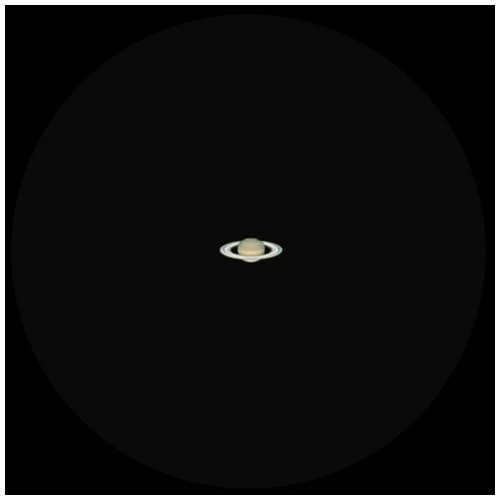
Saturn. An approximate view can be seen through telescopes with a 90mm diameter.
3) Binary stars. When observed through a telescope, binary stars appear as multiple closely spaced stars, either of the same color or different colors (e.g., orange and blue, white and red) – a truly mesmerizing sight. Studying binary stars at close range is a great way to test the resolving power of a telescope. It is important to note that all stars, except the Sun, are seen as mere dots through a telescope, regardless of their brightness or proximity. This is because stars are incredibly distant from us, and only the largest telescopes on Earth are capable of capturing their disk-like appearance.
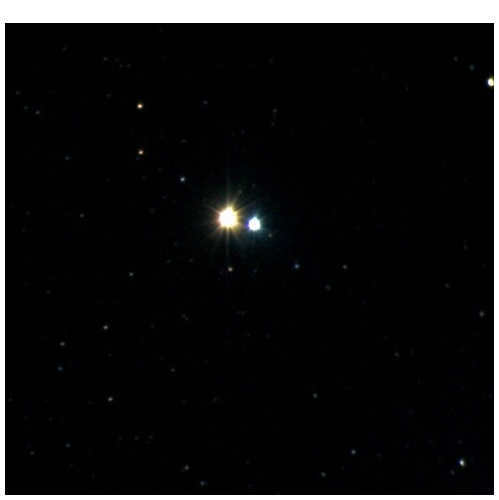
The Beta Swan, also known as Albireo, is a double star that can be observed in telescopes with a diameter of approximately 130mm.
4) Sun. Sunspots, which are areas with reduced temperature and strong magnetization, can be seen on the closest star to us even in small telescopes. Telescopes with a diameter of 80mm or larger allow for the observation of sunspot structures, as well as granulation and flare fields. It is important to note that observing the Sun in a telescope without proper protection, such as an aperture solar filter, is strictly forbidden as it can permanently damage your eyesight. When observing, it is crucial to securely attach the filter to the telescope tube to prevent it from detaching due to accidental wind gusts or hand movements. Additionally, the finder should be either removed or covered with protective covers.
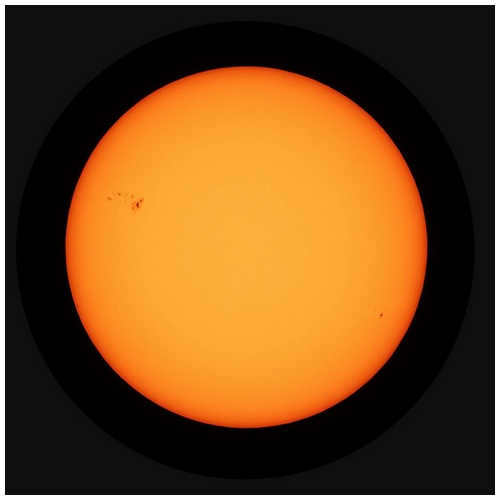
When observing the Sun with an aperture filter, the magnification is approximately 80x.
5) Star clusters. These are groups of stars that are bound together by gravity and have a common origin. They move together as a unit in the gravitational field of the galaxy. Historically, star clusters have been categorized into two types – scattered and globular. The larger scattered clusters can be seen even without a telescope, such as the Pleiades. With the naked eye, you can see 6-7 stars in the Pleiades, but with a small telescope, you can see around fifty stars in the Pleiades. Other scattered clusters appear as groups of stars, ranging from a few dozen to hundreds.
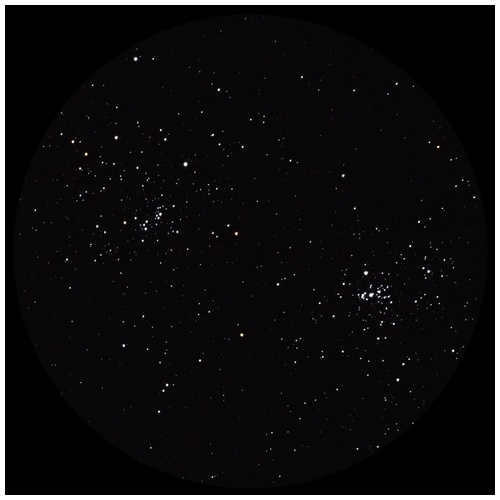
The double star cluster in Perseus can be seen through telescopes with a diameter of 75-90mm.
When using telescopes with diameters up to 100mm, globular clusters appear as hazy round spots. However, when the diameter reaches 150mm, the brightest globular clusters start to break up into individual stars. This disintegration process begins from the edges and gradually moves towards the center. For instance, when observed through a 200mm telescope, the globular cluster M13 in the constellation Hercules completely transforms into separate stars. In a 300mm telescope, at the same magnification, it appears even brighter, approximately 2.3 times brighter. This experience is truly unforgettable as you witness 300,000 sparkling stars through the eyepiece!
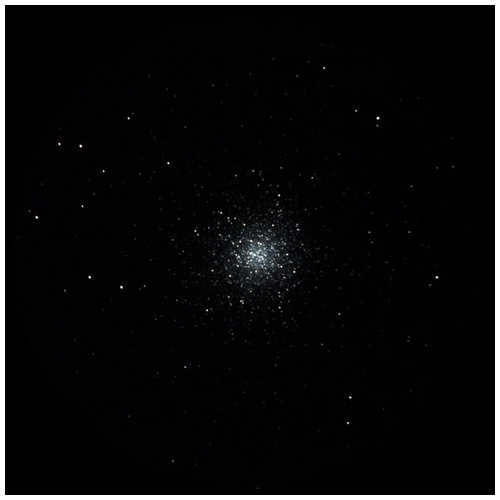
The Hercules globular cluster M13 can be seen in a telescope with a diameter of approximately 250…300mm.
6) Galaxies. These distant star islands can also be observed in telescopes with a diameter of 60…70mm, but they appear as tiny specks. To truly appreciate the details in the structure of galaxies, such as spiral arms and dust clouds, a telescope with a diameter of 200mm or more is recommended. The larger the telescope’s diameter, the better the view. However, even with a small telescope, it is possible to study the location of bright galaxies. It is important to observe galaxies in dark skies, away from light pollution, to get the best results.
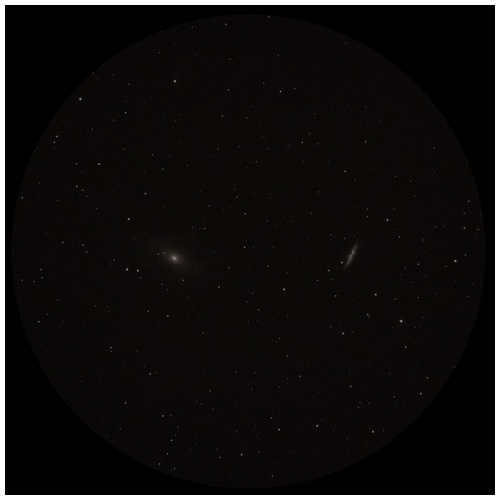
The constellations of the Big Dipper contains the galaxies M81 and M82. When observed through a telescope with a diameter of 100-150mm, these galaxies offer an approximate view.
7) Nebulae are massive collections of gas and dust that are illuminated by nearby stars. The most luminous nebulae, like the Great Nebula of Orion (M42) or the group of nebulae in the constellation of Sagittarius, can be seen with 35mm binoculars. However, to truly capture the full magnificence of the nebulae, a telescope is necessary. The same principle applies to galaxies, where the larger the lens diameter, the brighter the nebulae can be observed.
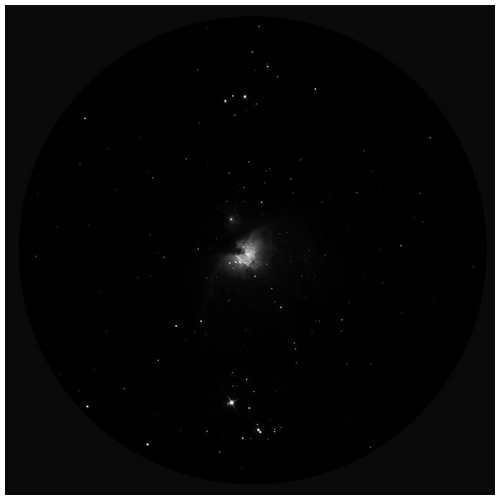
The Orion Nebula can be observed through telescopes with a diameter of 60-80mm.
It is worth mentioning that when observed through a telescope, both galaxies and nebulae appear gray. This is because they are very faint objects and their brightness is not sufficient for color perception. The only exception is the brightest nebulae, such as the Great Nebula of Orion, which may show hints of color when observed through telescopes with a diameter of 200mm or more. Nonetheless, the view of nebulae and galaxies through the eyepiece is a truly breathtaking sight.
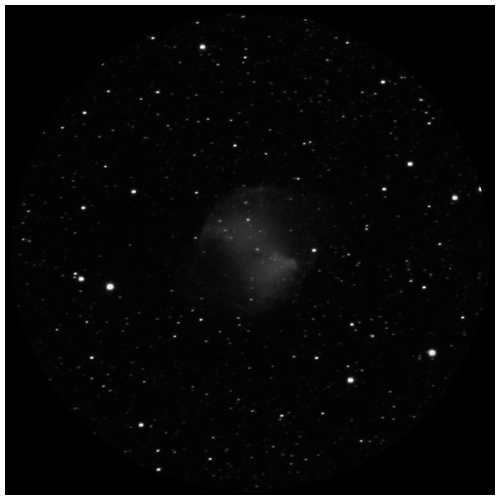
A rough depiction of the Dumbbell planetary nebula M27 in the Foxy constellation as seen in a clear sky using a 250-300mm telescope.
8) Comets – Numerous “tail travelers” can be observed all year round. They appear as hazy patches in the telescope, and the most luminous comets exhibit a tail. It is particularly fascinating to track a comet for several consecutive nights – you can witness its movement among the surrounding stars.
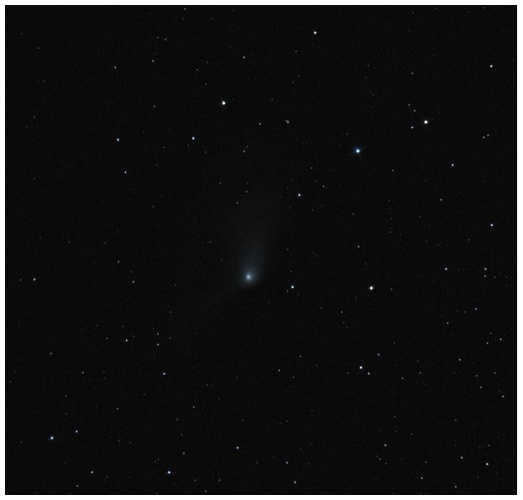
Here is an approximate representation of a brilliant comet seen through a telescope with a diameter of 130-150mm.
9) Objects on Earth. A telescope can also be used as a spotting scope, for example, for birdwatching or observing the surroundings. However, please note that not all telescopes provide a direct image.
The primary parameter of any telescope is the size of the objective lens. Nevertheless, no matter which telescope you choose, there will always be fascinating objects to observe. The most important thing is to have a passion for observation and a deep love for astronomy!
“The abyss is brimming with stars,
“The stars are countless, the abyss is unfathomable.
The universe appears to us as something distant and incomprehensible. It calls to us with its beauty and captivates us with its enigmas. We yearn to immerse ourselves in this atmosphere of mystery and, by unveiling its secrets, to gaze into the eyes of infinity. A telescope will serve as our guide to the world of shimmering stars and distant planets. You can acquire one by picking it up. Let’s explore what we can observe through an amateur telescope with an aperture of up to 150 mm.
The moon. Where would we be without it? Earth’s sole satellite and the most prominent object in the night sky. Equipped with a telescope, we will be able to discern craters, mountain ranges, grooves, domes, and lunar seas. It is recommended to observe the moon during the first and last quarters of the lunar phase, as during these periods, the satellite can be observed in greater detail.
The Sun. The most radiant celestial body. The optimal period for observing it is during the early morning. Through a telescope, one can easily observe sunspots and, undoubtedly, the renowned astronomical event – a solar eclipse. However, it is crucial to remember to use solar filters to prevent eye damage. Astronomers share a joke: “How many times can you gaze at the Sun through a telescope? Answer: two times – once with your right eye, and then with your left eye.”
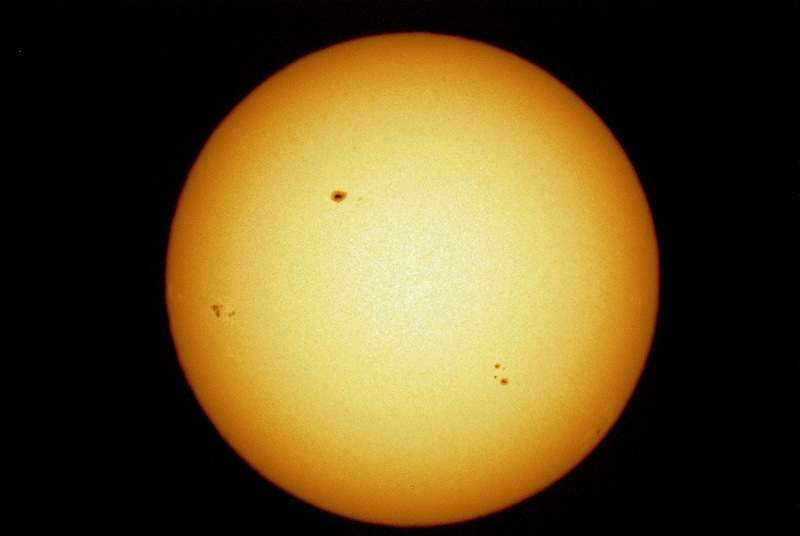
The Solar System’s Planets. Naturally, the planets appear differently when viewed through an amateur telescope compared to photographs taken by the orbiting Hubble telescope. However, the experience of studying them is equally fascinating and enlightening. The most captivating planets to observe are Venus, Mars, Saturn, and Jupiter.
Venus is best observed either in the morning or evening. Due to the planet’s dense atmosphere, its intricate features are quite challenging to discern, but the phases of Venus can be observed distinctly through a telescope.
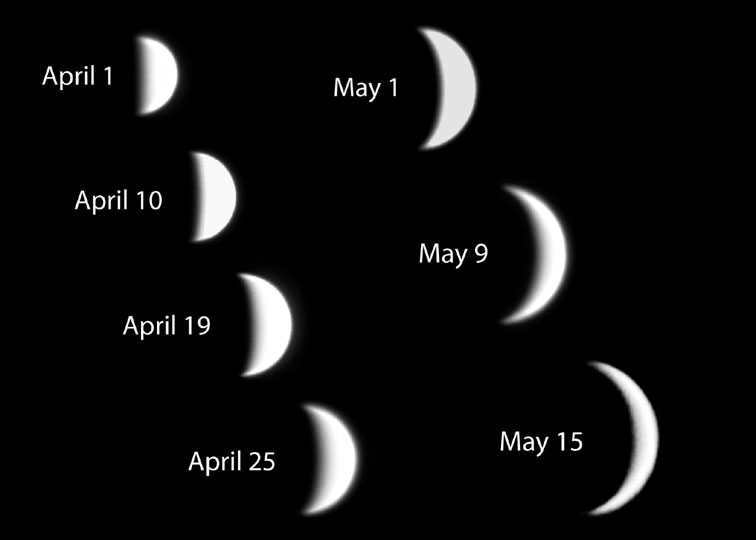
By observing during the remarkable alignment of Mars and Earth, you will gain a comprehensive understanding of this planet. This rare event, known as the great opposition, marks the closest approach between the two planets. During this highly anticipated period, you will have the opportunity to witness the polar caps at the poles, vast seas, and intricate cloud formations on Mars.
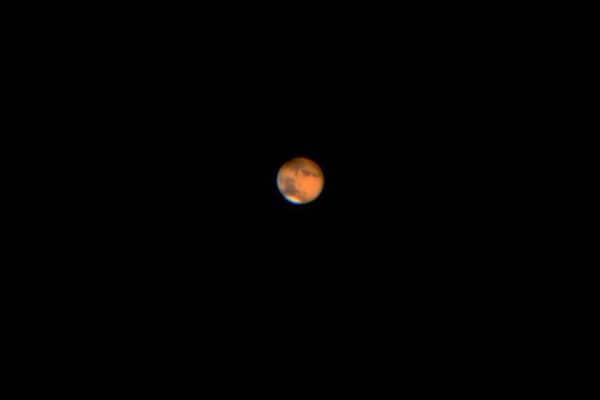
Even with a low magnification in a telescope, you can still observe the magnificent rings of Saturn! Furthermore, if you possess a telescope equipped with a 100-millimeter lens, you will be able to marvel at the planet’s captivating cloud belts.
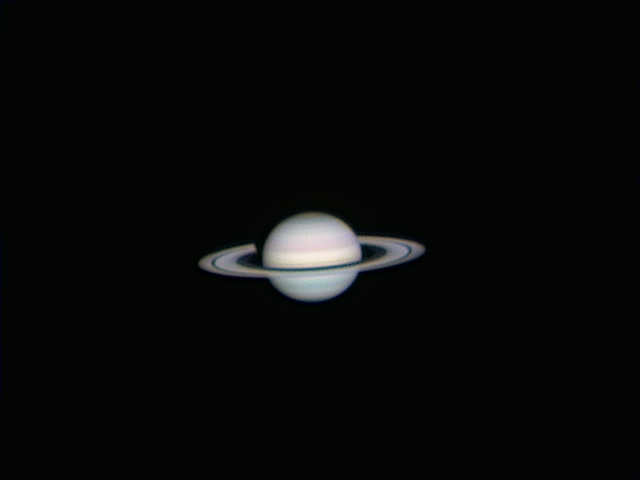
Out of all the celestial objects in our solar system, Jupiter is the most easily observable planet. When observing Jupiter, you have the opportunity to closely examine its four largest moons: Io, Europa, Ganymede, and Callisto. Furthermore, if you possess a telescope with an aperture exceeding 100 mm, you can also witness Jupiter’s distinctive cloud belts and the awe-inspiring great red spot.
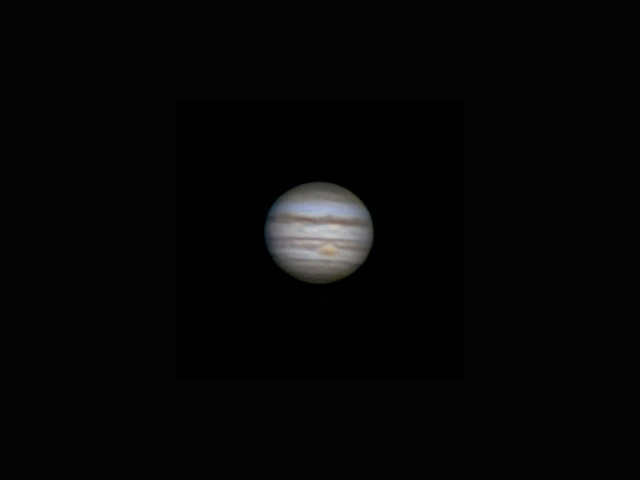
Stellar clusters, celestial clouds, and distant galaxies. In order to observe these entities within the vast expanse of the cosmos, a telescope with enhanced capabilities is required. When peering through amateur telescopes, which possess limited magnification, one will only perceive diminutive specks or pale blemishes. Nevertheless, this circumstance shall not deter your resolve, shall it?
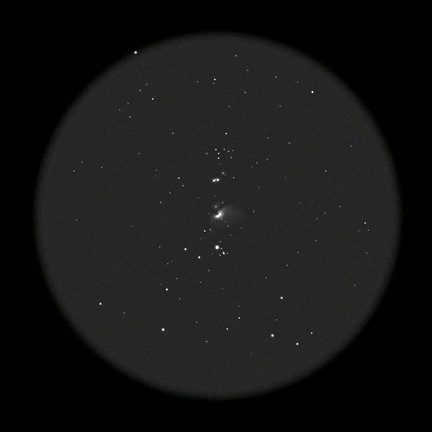
Levehuk Skyline PRO 2000 EQ
The Orion Nebula. It is an incredibly vibrant and awe-inspiring celestial object. When observed with the naked eye, the nebula appears as a hazy glow, while through binoculars it is visible as a radiant cloud. Interestingly, this “cloud” is so vast that its material would be sufficient to create around a thousand suns or more than three hundred million Earth-sized planets.
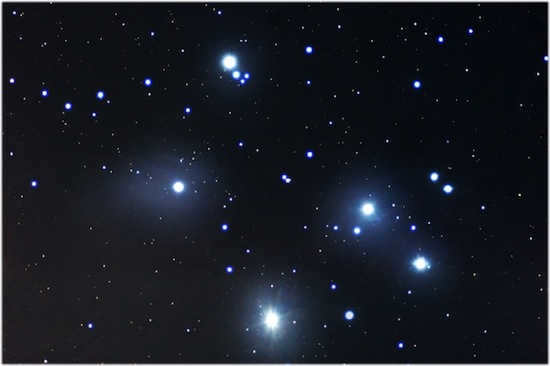
Photo captured using the Levehuk Skyline PRO 1000 EQ telescope
The Pleiades star cluster. Situated in the Taurus constellation. The Pleiades contains approximately 1000 stars, but not all are visible from Earth. The stars are surrounded by a blue halo, which is a nebula that engulfs the star cluster. The nebula is only visible around the most luminous Pleiades stars.
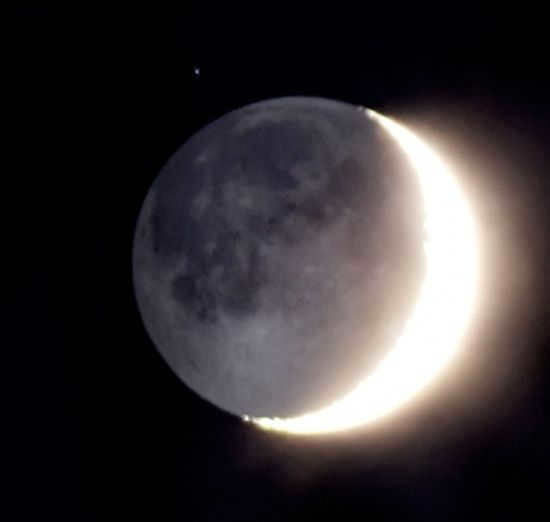
The image was captured using a Levehuk Skyline PRO 1000 EQ telescope
Lunar Surface. When observed without any aid, the Moon appears as a bright crescent. The dark regions are known as lunar seas, while the lighter areas represent the highlands. These features combine to create the distinct “smiley face” pattern seen on a full Moon.
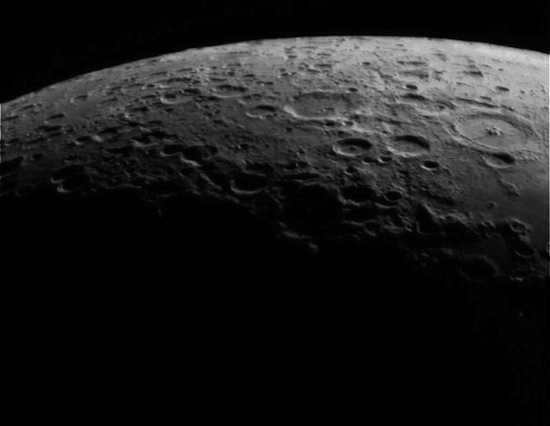
The image was captured using the Levehuk Skyline PRO 2000 EQ telescope
When observing the moon through a telescope, one can clearly see the surface with its numerous craters. However, the Soviet lunar rover and the American flag cannot be seen with regular telescopes. To catch a glimpse of these objects, it would require a massive telescope with a mirror hundreds of meters in diameter – a technology that is yet to exist on Earth.
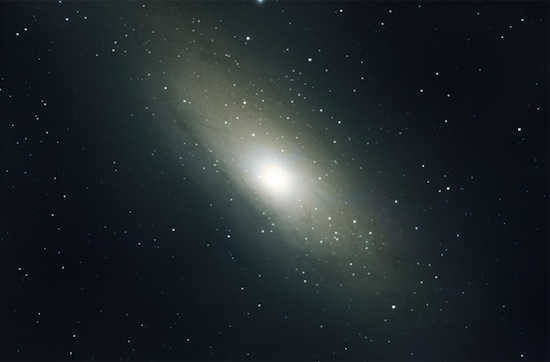
The photograph was captured using the BRESSER Messier NT-203 telescope
The Andromeda Galaxy. – is one of the nearest galaxies to our own. “Near” is a subjective term: it is approximately 2.52 million light-years away. Due to this vast distance, we observe the Andromeda Galaxy as it existed 2.5 million years in the past. During that time, humans did not inhabit the Earth. The current appearance of the Andromeda Galaxy remains unknown.
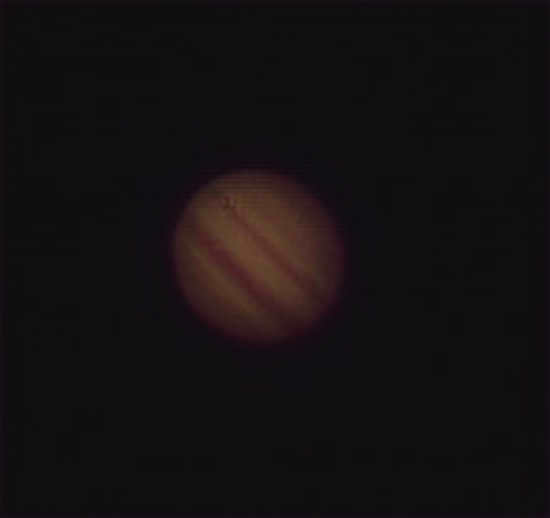
The Levehuk Skyline PRO 1000 EQ telescope was used to capture the image.
Do you recognize it? That’s right, it’s Jupiter! You can also observe Venus, Saturn, Uranus, Neptune, and various other celestial objects through a telescope.
The best place to observe the starry sky is away from the city where there is no light pollution. However, even in urban areas, you can still see many interesting things. For beginners, any telescope will suffice, but as you progress, you may want to consider upgrading to a professional model. It is advisable for beginners to seek advice from experienced astronomers before purchasing a telescope. You can find such guidance and ask questions during the Days of Open Astronomy (DOA) events, which take place in many cities across Russia (DOA schedule – ). These events bring together astronomy enthusiasts who are passionate about their work and can provide extensive knowledge about astronomy. They also offer the opportunity to look through a telescope free of charge.
Did you enjoy the article? Show your support for Factroom by clicking here:
For many beginner amateur astronomers, one of the first questions that comes to mind is what can be seen through a telescope.
Some people may think that a telescope can reveal the American flag, planets the size of a soccer ball, and colorful nebulae like the ones seen in Hubble photos. However, if you share this belief, I must disappoint you – the flag is not visible, planets appear as tiny spheres, and galaxies and nebulae appear as gray, colorless spots. The truth is that a telescope is not simply a tool for entertainment or to experience a sense of wonder. It is a complex optical device that, when used properly and thoughtfully, can provide a multitude of pleasant emotions and impressions when observing celestial objects.
When it comes to telescopes, one of the most crucial factors to consider is the diameter of the objective, which can be either a lens or a mirror. For those who are just starting out, it is common to opt for a more affordable telescope with a diameter ranging from 70 to 130 mm, as a way to familiarize oneself with the wonders of the night sky. It is important to note that the larger the diameter of the telescope’s lens, the brighter the image will appear when observing at the same magnification. For instance, if we were to compare telescopes with diameters of 100 mm and 200 mm, both set at a magnification of 100x, the difference in image brightness would be fourfold. This disparity becomes particularly noticeable when observing faint celestial objects such as galaxies, nebulae, and star clusters. However, it is not uncommon for beginners to be enticed by the idea of purchasing a larger telescope right from the start, with diameters ranging from 250 to 300 mm, only to realize later on the weight and size that comes with it. It is important to keep in mind that the best telescope is the one that gets used most frequently!
So, what can you observe through a telescope? First and foremost, the Moon. Our celestial companion is a fascinating sight for both beginners and experienced enthusiasts. Even with a small telescope that has a diameter of 60-70 mm, you can see lunar craters and seas. However, if you increase the magnification to over 100x, the entire moon will not fit within the field of view, only a portion will be visible. Additionally, the appearance of the lunar landscapes will change as the phases of the moon change. When observing the young or old moon (narrow crescent), you may also be able to catch a glimpse of the “ashen light” – a faint glow on the dark side of the moon, caused by the reflection of Earth’s light off the lunar surface.
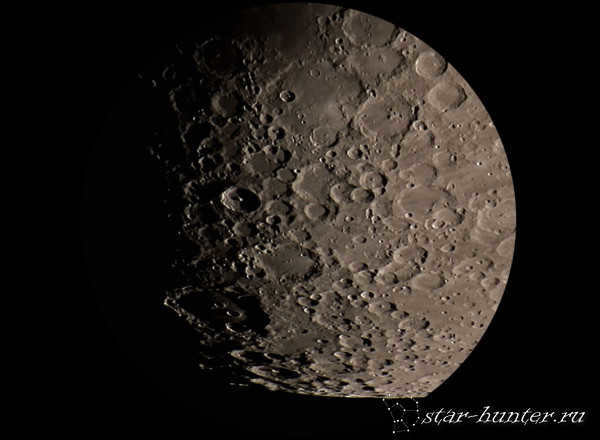
Moreover, when using a telescope, it is possible to observe each and every planet in the solar system. In smaller telescopes, Mercury appears similar to a regular star, while in telescopes with a diameter of at least 100 mm, one can witness the planet’s phase – a small crescent shape. Unfortunately, observing Mercury is only possible during specific periods as the planet is located relatively close to the Sun, making it challenging to observe.
Venus, also known as the morning evening star, is the most radiant celestial body in the sky (excluding the Sun and the Moon). Its radiance is so intense that it can even be observed during daylight hours with the naked eye (as long as you know where to direct your gaze). With the aid of modest telescopes, one can discern the various phases of this planet – it transitions from a small circular shape to a crescent resembling the moon. Interestingly, individuals who observe Venus through a telescope for the first time often mistake it for our lunar neighbor. This is due to Venus possessing a dense, impenetrable atmosphere, which prohibits the observation of any intricate features – only a white crescent can be discerned.
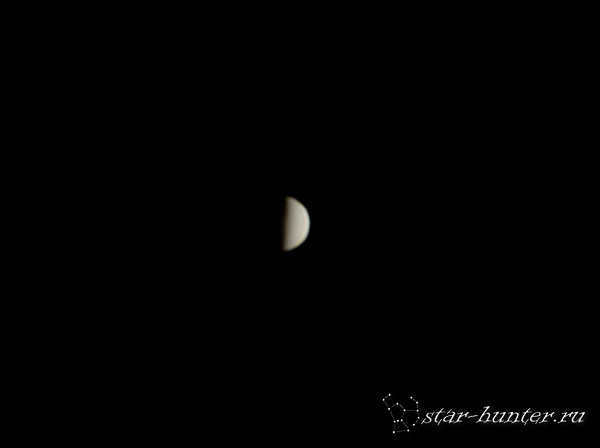
The Earth. It may sound strange, but a telescope can also be utilized for observing terrestrial objects. Many individuals purchase a telescope with the intention of using it to observe both space and objects on Earth. However, not all types of telescopes are suitable for ground-based observations. Lenticular and mirror-lens telescopes, for example, can provide a direct image, whereas in Newtonian mirror telescopes, the image is inverted.
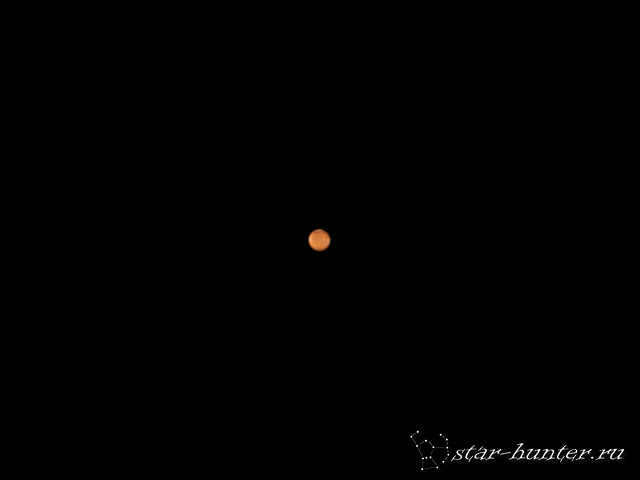
Jupiter and its moons – an approximate view through a small telescope.
Jupiter – quite possibly the planet that marked the beginning of the era of telescopic observations. When observing Jupiter through a basic homemade telescope, Galileo Galilei made a remarkable discovery – four moons (Io, Europa, Ganymede, and Callisto). This discovery later played a crucial role in advancing the heliocentric model of the solar system. Even with modest telescopes, one can also observe distinct cloud belts on Jupiter’s surface. The famous Great Red Spot can be easily seen with telescopes ranging from 80-90 mm in diameter. Occasionally, these moons pass in front of Jupiter, casting their shadows onto its surface. This phenomenon is also observable through a telescope.
Uranus and Neptune, two distant planets orbiting far from the rest of the planetary system, can only be observed as mere points of light through small telescopes. However, when observed through larger telescopes, these distant giants reveal themselves as small disks with a delicate bluish-green hue, devoid of any discernible features.
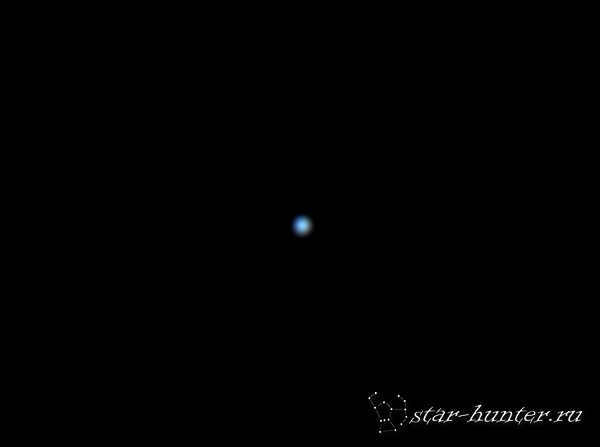
Galaxies can be observed not only with a telescope but also with binoculars. The challenge lies in locating them rather than merely seeing them. When observed through a telescope, galaxies appear as small, colorless dots. However, with a diameter of 90-100 mm, bright galaxies start to reveal their shapes. The Andromeda Nebula is an exception, as its shape can be easily discerned even with binoculars. It is worth noting that spiral arms are not visible until a diameter of 200-250 mm, and even then, they can only be seen in a few galaxies.
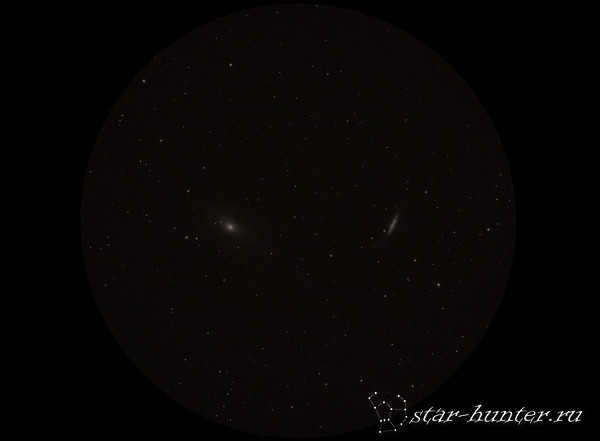
Gas clouds and dust in space known as nebulae can be observed in telescopes. They are illuminated by stars or remnants of stars. When viewed through a small telescope, nebulae appear as faint specks. However, with larger telescopes (around 100-150 mm), the shape and structure of most bright nebulae can be discerned. One well-known nebula, M42 in the Orion constellation, is even visible to the naked eye. Through a telescope, it reveals a complex gas structure resembling puffs of smoke. Certain bright nebulae exhibit color, such as the NGC 6210 Turtle Nebula, which appears as a small bluish disk.
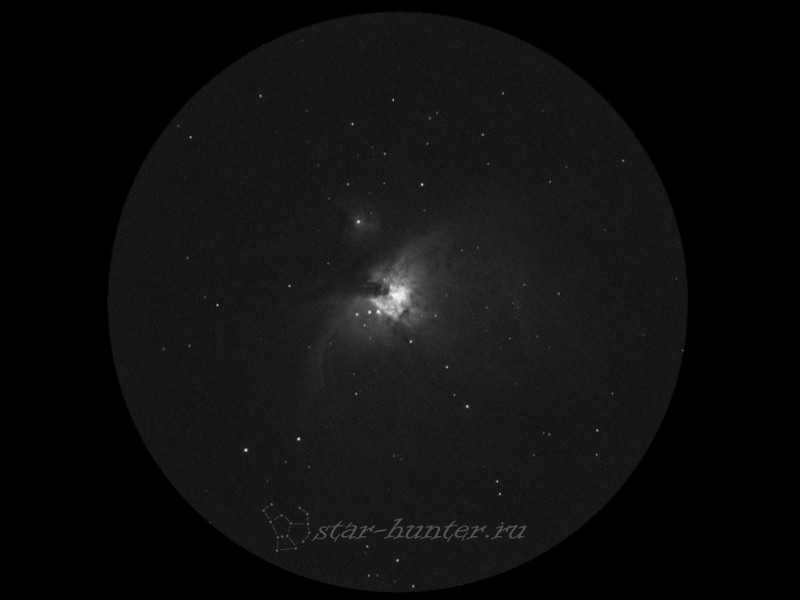
I want to emphasize the importance of using proper safety measures when observing the Sun. It is crucial to have a special aperture filter securely attached to the front of your telescope. Please do not rely on tinting films, smoked glass, or floppy disks. It’s essential to prioritize the safety of your eyes. By following these precautions, even with a small 50-60 mm telescope, you will have the opportunity to witness sunspots – dark formations on the surface of the Sun. These spots are where magnetic lines emerge. Since the Sun rotates approximately every 25 days, observing sunspots daily allows you to observe the rotation of the Sun.
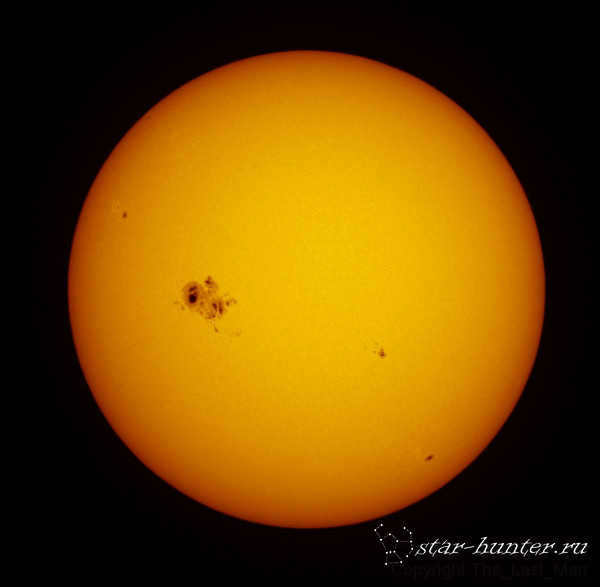
With my extensive experience in amateur-level telescope night observations, I aim to provide insight into what you can actually observe through a telescope that costs up to 100,000 rubles and is portable enough to be transported by car (i.e., not stationary).
Many people have seen photographs taken with telescopes, and even those taken with the Hubble telescope. As a result, they are often compelled to purchase a telescope and are then shocked by what they actually see through it.
The truth is that our eyes are limited in their ability to perceive enough light to render the telescope image colorful and detailed (especially in low-light conditions, where we perceive a grayscale image). However, a camera sensor can capture and enhance these details!
Therefore, most of what you see through an ordinary telescope will appear distorted in color and obscured. To illustrate this, let me provide you with some examples!
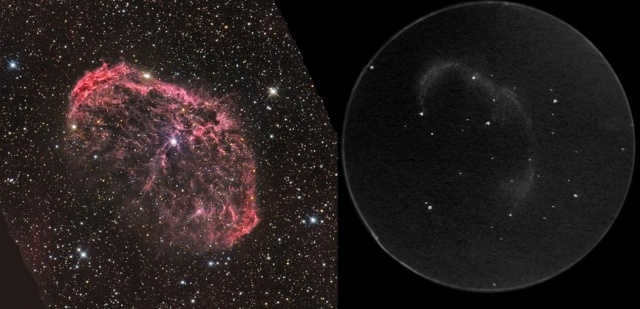
The image showcases the Crescent Nebula (NGC 6888), also known as the Crescent Nebula. The photograph on the left displays the nebula, while the image on the right demonstrates its appearance when observed through a telescope:
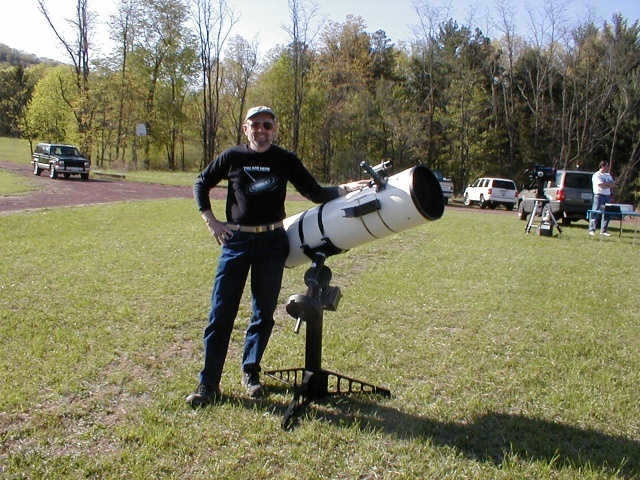
It is important to note that the telescope is quite weighty and comes with a price tag of at least 50,000 rubles.
Now let’s shift our focus to the smaller galaxies located in the Virgo constellation, specifically M86 and M84.
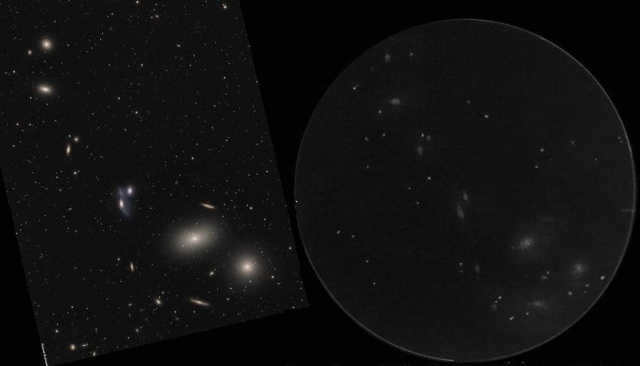
What can be seen in the previous large telescope is shown on the right.
The constellation Triangle contains the impressive galaxy M33.
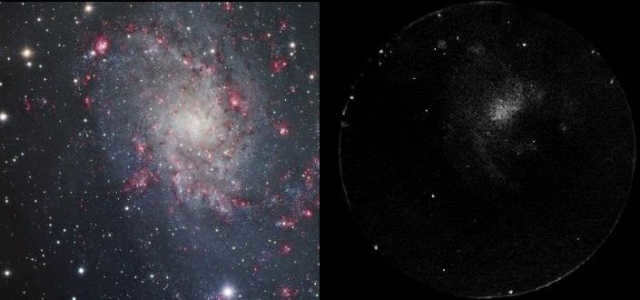
The Pleiades, also known as the Seven Sisters, is a well-known star cluster that can be seen through a telescope. However, upon closer examination, the photograph reveals the presence of a distinct dust cloud surrounding the stars.
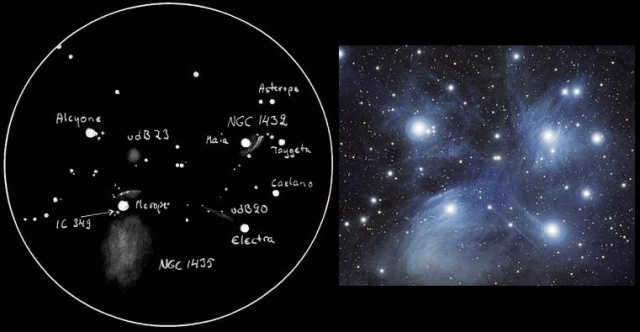
This is a globular cluster located in the Sagittarius constellation (M22). On the left, you can see the photograph, and on the right, you can observe it with your own eyes.
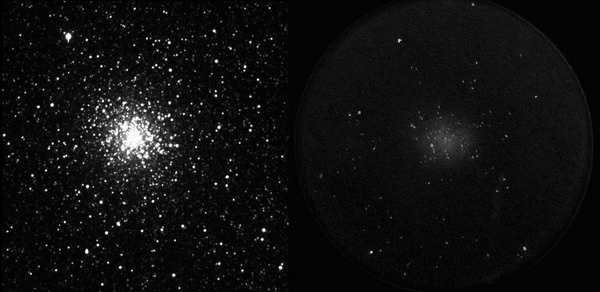
In addition, here is a brief breakdown of the celestial objects that are visible through telescopes of various sizes.
Here is a list of what can be observed through telescopes with different diameters:
60-70 mm refractor, 70-80 mm reflector.
Albireo, Mizar, and other double stars with a separation greater than 2″ can be observed.
Faint stars up to magnitude 11.5 are visible.
Sunspots can be seen, but only with an aperture filter.
The different phases of Venus are observable.
The Moon’s craters with a diameter of 8 km can be observed.
During the Great Confrontation, it is possible to see the polar caps and seas on Mars.
On Jupiter, the belts are visible, and under ideal conditions, the Great Red Spot (GRS) and its four satellites can be observed.
Saturn’s rings are visible, and under perfect seeing conditions, the Cassini slit and the pink belt on Saturn’s disk can be seen.
Uranus and Neptune can be observed as stars.
Large globular clusters like M13 and scattered clusters can be seen.
Almost all objects in the Messier catalog can be observed, but without much detail.
Refractor with an aperture of 100-130mm, reflector with an aperture of 130-150mm, or catadioptric with an aperture of 130-150mm.
Observing double stars with a separation of 1″ or greater, faint stars up to magnitude 13 can be seen.
Furthermore, with this telescope, you can also observe details of lunar mountains and craters that are 3-4 km in size.
To observe spots in the clouds on Venus, you can try using a blue filter.
During oppositions, Mars reveals numerous details.
Additionally, you can observe detail in the belts of Jupiter and the cloud belts on Saturn.
This telescope is also suitable for observing many faint asteroids and comets.
Moreover, it allows you to observe hundreds of star clusters, nebulae, and galaxies. The brightest galaxies might even show traces of spiral structure, such as M33 and M51.
Lastly, this telescope provides the opportunity to observe a large number of objects from the NGC catalog, many of which have interesting details.
Refractors ranging from 150-180 mm and reflectors or catadioptrics ranging from 175-200 mm are available.
You can observe double stars with a separation of less than 1″, as well as faint stars up to magnitude 14.
On the Moon, you can see formations as small as 2 km in size.
Mars may exhibit clouds and dust storms.
When observing Saturn, you may be able to see its 6-7 satellites, and you can even try to observe Titan’s disk.
At their maximum opening, you may be able to see spokes in Saturn’s rings.
The Galilean satellites appear as small disks.
With these apertures, the level of detail in the image is determined by the capabilities of the optics rather than the state of the atmosphere.
You can resolve some globular clusters into stars almost to the center.
Even when observing from an area with city light pollution, you can still see details of the structure of many nebulae and galaxies.
Refractor with a diameter of 200 mm or larger, reflector or catadioptric with a diameter of 250 mm or larger.
Under optimal conditions, this telescope can observe double stars with a separation of up to 0.5", as well as stars with a magnitude of 15 or fainter.
It is also capable of capturing lunar formations that are less than 1.5 km in size, small clouds and structures on Mars (occasionally including Phobos and Deimos), and a significant amount of detail in Jupiter’s atmosphere.
Additionally, it can capture Enke’s division in Saturn’s rings, Titan’s disk, Neptune’s satellite Triton, and even Pluto as a faint star.
The level of detail in the images obtained with this telescope is heavily influenced by atmospheric conditions.
Furthermore, it is capable of observing thousands of galaxies, star clusters, and nebulae.
With this telescope, it is possible to see virtually all the objects listed in the NGC catalog, many of which reveal details that are not visible with smaller telescopes.
Last but not least, the brightest nebulae captured with this telescope exhibit subtle colors.
However, this should not in any way discourage you from pursuing an interest in astronomy. In the following paragraphs, I will clarify the reasons why it would still be a wise decision to invest in a telescope.
It is not uncommon for individuals who have little knowledge of astronomy to become inspired by images captured by the Hubble Telescope or the James Webb Telescope, prompting them to purchase a personal telescope. Witnessing the surfaces of planets, passing icy comets, or distant nebulae that are millions of light years away from Earth with one’s own eyes is an incredibly thrilling experience.
Approaching the telescope’s eyepiece, one’s heart races with anticipation, eager to delve into the enigmatic realm of space and explore its captivating hidden intricacies and vibrant hues. However, the reality often diverges greatly from one’s expectations. Yet, this does not mean that investing in a telescope is futile. Simply gaze upon these photographs, and you will comprehend the true essence.
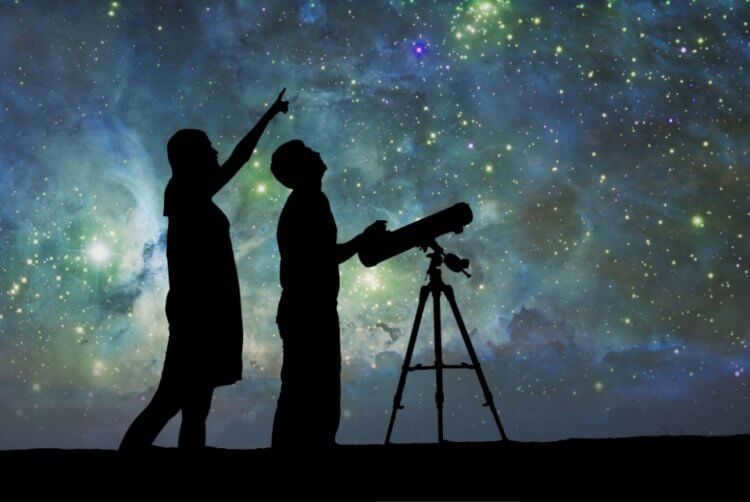
Distinguishing Features of Costly Telescopes compared to Inexpensive Ones
If you visit any online store, you will observe that the prices for amateur astronomical telescopes commence at $50 or even $25 (approximately 1560 rubles) and can escalate to several thousand dollars. It doesn’t require expertise to comprehend that the more expensive the telescope, the superior its ability to observe various celestial objects. However, how substantial and crucial is this disparity?
From a technical perspective, telescopes vary in their optics, construction type, lens diameter, and, of course, size. Amateur telescopes are available in refractor, refractor-mirror, and reflector forms. When purchasing an affordable device with a diameter of up to 100 mm, it is advisable to opt for a refractor or refractor-mirror model. If you are interested in a telescope with a lens diameter exceeding 100 mm, then a reflector model would be preferable.
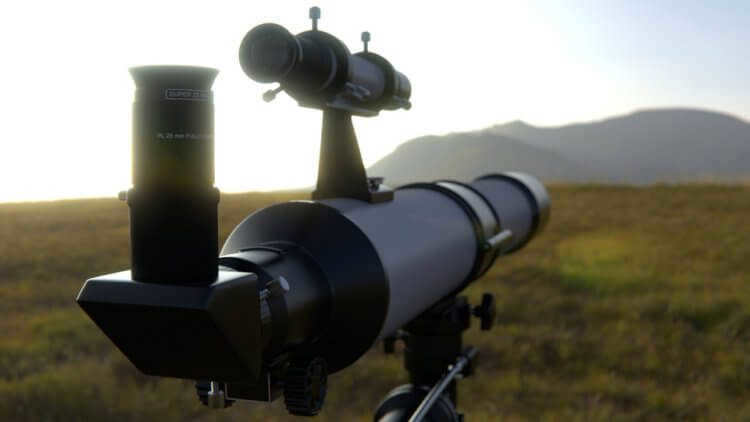
Factors affecting the visibility of objects
The visibility of objects is influenced by various factors, not just the quality of the telescope. External factors also play a significant role in this. It is not only clouds that can affect visibility, but also light and atmospheric pollution. Urban lighting, for example, scatters in the atmosphere and reflects off dust particles suspended in the air.
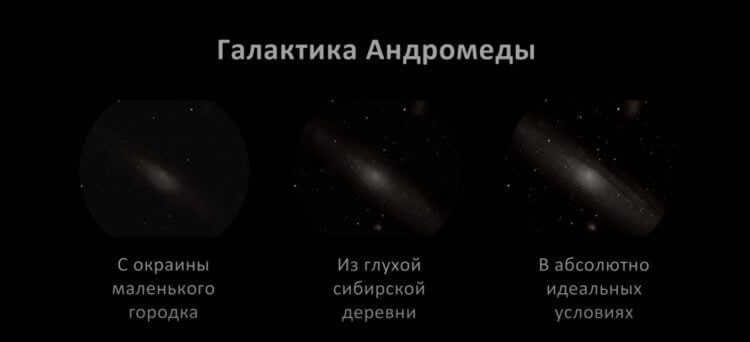
Observability of the Andromeda Galaxy under different circumstances
Consequently, celestial bodies may appear considerably indistinct and blurred even when observed through the most high-priced telescope. Hence, if you decide to pursue astronomy from the comfort of your own balcony, particularly in a bustling metropolis, it may not be the most optimal choice. To observe planets and various astronomical phenomena, you will need to venture outside the city to areas devoid of streetlights and with less atmospheric contamination. This is precisely why observatories are constructed in mountainous regions, far removed from urbanization.
What can you observe through a telescope?
There is a common misconception that a telescope allows you to see the planets of our solar system in great detail, resembling the images that are published by NASA. However, this often leads to disappointment for amateur astronomers. In reality, even with a high-quality telescope, many planets appear as small, indistinct dots. Nonetheless, this doesn’t mean that there isn’t anything interesting to observe through an amateur telescope.

This is the appearance of Venus through an affordable telescope
Mercury and Venus
Observing Mercury is challenging due to its close distance to the Sun, making it a rare sight. Even if you can spot it through the telescope, it will appear as a tiny, blurred spot.

Venus observed through a high-end amateur telescope
When it comes to Venus, the circumstances are more favorable as it can be observed using a budget-friendly telescope. However, the view might not be particularly impressive, as it appears as a small, silvery crescent-shaped object. There is minimal detail to observe, even when using a more expensive telescope.

This hazy reddish spot represents Mars – this is the appearance it assumes when observed through an affordably priced telescope
Mars
The majority of individuals are captivated by Mars rather than Venus or Mercury. Scientists are diligently exploring Mars, hoping to discover signs of past or present life, or even uncovering the possible reasons behind the “demise” of the red planet. Unfortunately, obtaining a clear view of Mars is not feasible. Even when Mars is at its closest proximity to Earth, it appears as a red spot with rounded contours through an inexpensive telescope. However, when Mars is distanced from our planet, it becomes imperceptible.

The view of Mars through a high-priced telescope is much more captivating
A pricy telescope provides a greater level of detail. If you are fortunate, you may even catch a glimpse of the polar caps. Nevertheless, the image will still deviate from the typical imagination of many individuals.

This is how Jupiter can be observed through an affordable telescope
Jupiter and Saturn
Observing Jupiter is a highly fascinating experience. Even Galileo Galilei was able to observe this planet through his telescope, proving that a high-end device is not necessary. With a budget-friendly telescope, you will be able to see Jupiter’s equatorial bands. With a more expensive telescope, the image will be even clearer, allowing you to distinguish the distinct boundaries between the equatorial bands. Additionally, any telescope will allow you to see Jupiter’s four satellites. Unfortunately, the satellite Enceladus, which may potentially harbor life, is not visible through an amateur telescope.
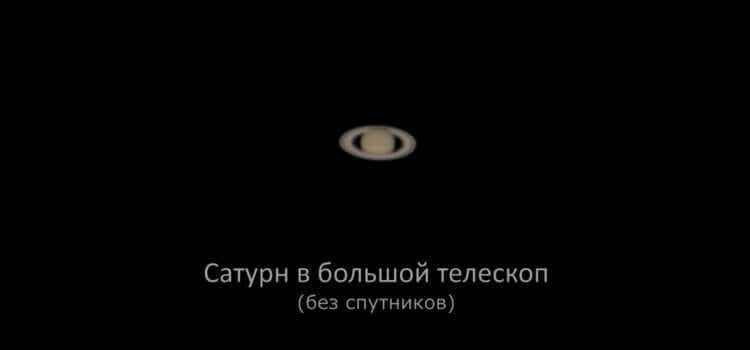
This is the view of Saturn through a high-priced telescope.
Saturn is even more impressive when observed through any telescope, displaying its renowned rings and satellites. However, with a costly instrument, one can also distinguish the equatorial bands surrounding the planet.
Uranus, Neptune, and Pluto
As for Pluto, it is impossible to obtain a meaningful sighting of it through either a cheap or an expensive telescope. Its immense distance from Earth, coupled with its small size, makes it virtually invisible.

Despite using a high-end telescope, Uranus remains difficult to observe.
Uranus and Neptune are observable in a telescope, and with a top-of-the-line instrument, it is possible to distinguish their colors. However, they will still appear as small, indistinct dots. Therefore, for casual stargazers, these planets hold minimal appeal.
Exploring the Depths of Space
When it comes to observing deep space objects, it may seem counterintuitive, but high magnification is actually not necessary. Instead, the key factor lies in the diameter of the lens, as it determines the telescope’s ability to gather light. In other words, the larger the lens diameter, the more light it can capture. This light-gathering capability is what enables us to see galaxies and nebulae in the night sky.
Therefore, when it comes to viewing deep space objects, the disparity between inexpensive and expensive telescopes becomes more pronounced. However, even more crucial is the absence of light pollution. Attempting to observe deep space objects from the heart of a bustling city is futile, regardless of the telescope used.
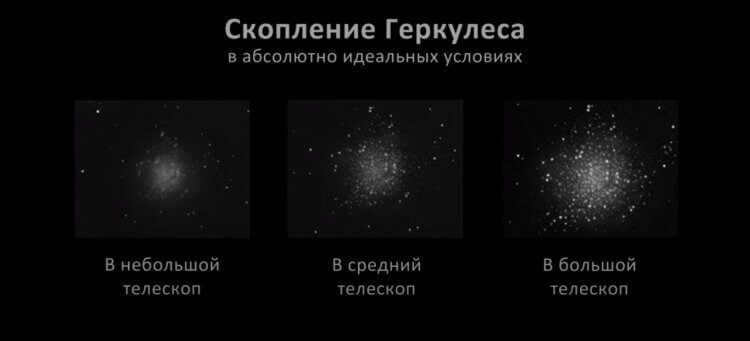
Observing the Hercules cluster through amateur telescopes of various price ranges reveals its appearance.
To witness this phenomenon, clear and moonless skies are necessary, along with unpolluted atmosphere. Under these conditions, an expensive telescope can detect hundreds of celestial objects. However, only a few dozen will be distinctly visible. Expectations of vivid colors should be set aside, as the distant space appears in black and white. You may wonder about photographs. Colors are artificially added to them using filters. At times, photos are artificially colored not for aesthetic purposes, but to aid scientists in discerning the interactions of various gases in space and the formation of galaxies and nebulae.
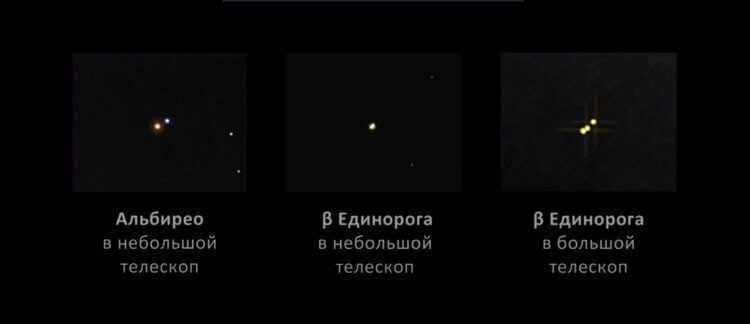
This is the appearance of stars when observed through a telescope
Stars and the Sun
Observing stars may not be particularly captivating as they appear the same with or without a telescope. However, it is worth noting that what may seem like a solitary star to the naked eye is often a cluster of closely positioned stars. These “multiple” stars can be observed with any telescope.
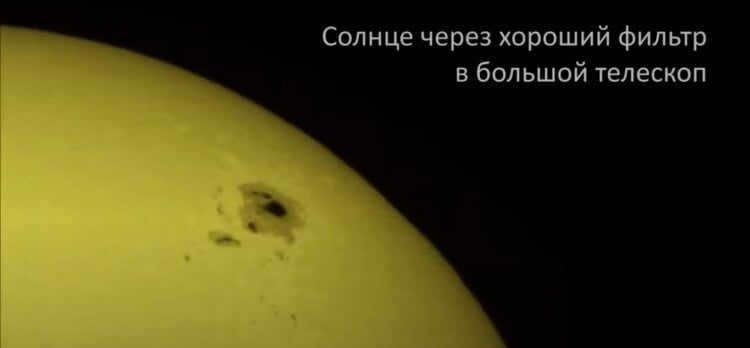
This is how you can observe the Sun using a high-quality filter in a costly telescope
When it comes to observing the Sun, you have the opportunity to witness its magnificence through a telescope on two occasions – utilizing your left eye and your right eye. And there is certainly a humorous twist to this statement. Directly gazing at our star is an impossibility without the aid of specialized equipment. However, you can acquire a specialized filter, which operates on the same principle as sunglasses. Even with the most affordable telescope, when equipped with this filter, you can spot sunspots on the surface of the Sun. In a luxurious telescope, as is customary, more intricate details will reveal themselves.
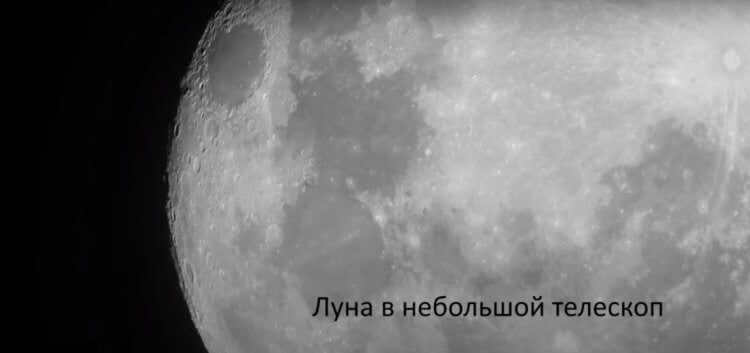
Here is the appearance of the Moon through an affordable telescope
Lunar Body
It is quite easy to observe the Moon through a telescope and see all its features. It should be mentioned that even with a simple telescope or binoculars, one can observe the large details of the Moon’s surface.
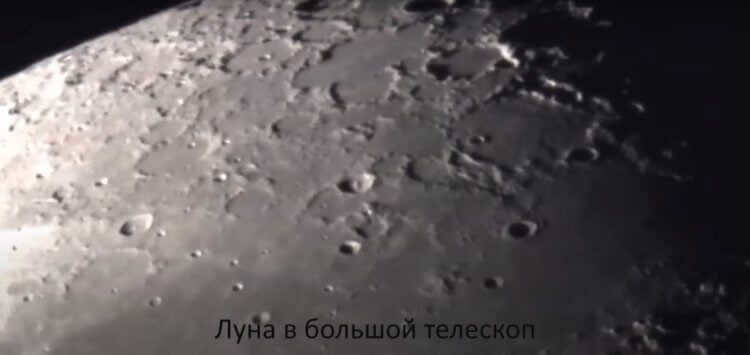
With the help of a high-priced telescope, it becomes possible to observe the Moon with enhanced precision
Through the lens of a telescope, it is feasible to discern even relatively diminutive craters and various irregularities on the celestial body. A particularly costly telescope will enable you to detect an abundance of particulars. However, it is futile to attempt to locate the American flag and the lunar rover using a telescope, as it lacks the necessary capabilities for such an endeavor.
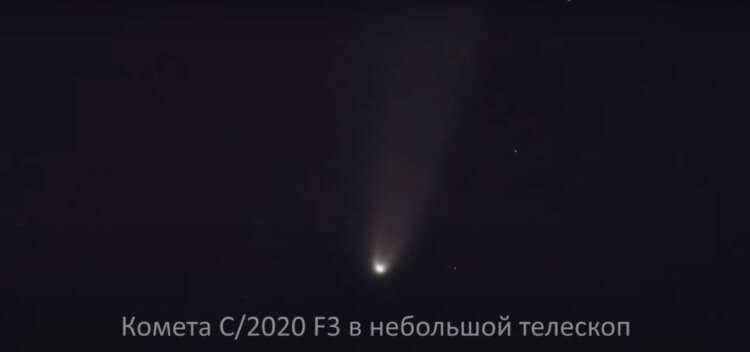
Even a low-cost telescope can provide visibility of comets
Comets, Supernovae, and Man-Made Satellites
At times, when comets approach the Sun closely, they become visible through any telescope. Generally, they appear as a hazy shell with a small luminous dot inside. However, on certain occasions, comets get near Earth, enabling us to observe them in greater detail. Additionally, it is also possible to observe Earth’s satellites and even the International Space Station (ISS) using a telescope.
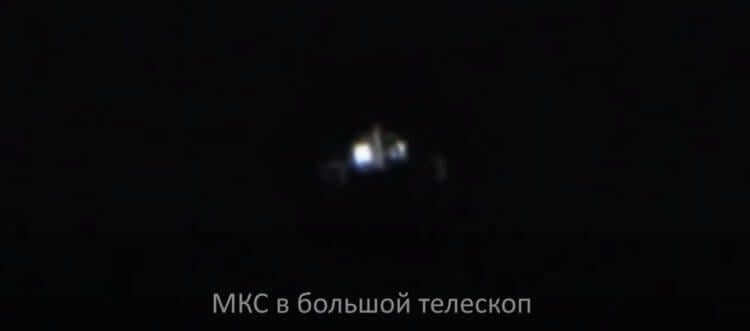
With a quality telescope, it is possible to identify the specific characteristics of the International Space Station (ISS).
For those who are deeply involved in space observation, there are occasional opportunities to witness extraordinary phenomena like supernova explosions, star eclipses caused by asteroids, and more. Additionally, one can observe variable stars that undergo changes in brightness over time.
While observing celestial objects through a telescope may not offer the vibrant spectacle that many people envision, it remains an incredibly captivating and thrilling experience.
Observation of Mercury is possible only before sunrise or after sunset. The conditions for observing Mercury are not favorable due to its close proximity to the Sun. The planet is small in size and appears very low on the horizon, making it difficult to see. Additionally, it is often obscured by the morning and evening dawn. To observe the smallest planet in our solar system, it is necessary to find an open area with an unobstructed view of the western horizon in the evening or the eastern horizon in the morning. With a small telescope, it is possible to observe the phases of Mercury, while a telescope with an aperture larger than 150 mm will reveal dark features on the planet’s surface.
Mercury is typically available for telescopic observations for approximately five weeks during its periods of optimal visibility. In 2013, according to the calendar, Mercury had three periods of morning visibility and two periods of evening visibility. The second period of evening visibility for Mercury commenced in late May. The most favorable conditions for observation occurred on June 1st. On June 12th, Mercury reached its greatest eastern elongation, after which visibility conditions began to deteriorate. On June 21st, there will be a second close approach of Mercury to Venus, with the angular distance between the two planets being less than 2˚. However, Venus will outshine Mercury in the sky, appearing more than a hundred times brighter. Mercury is currently approaching Earth, and its period of evening visibility will conclude by the end of June. The second period of Mercury’s morning visibility will begin in late July. Towards the end of August, there will be an extended period of invisibility for the planet. In the first few days of November, Mercury will once again become visible in the southeastern direction. Morning visibility will come to an end by the beginning of December.
2. Venus Observation
Venus, similar to Mercury, can be observed before sunrise or after sunset. This celestial body appears in the sky as a brilliantly bright, blue-tinted light. Its thick atmosphere prevents any surface features from being discerned. When Venus comes closer to Earth, it takes on the appearance of a slim crescent, while moving further away causes it to shrink into a smaller disk.
Binoculars serve as an excellent instrument for locating Venus and conducting basic observations of it. Due to their wide field of view, binoculars allow for the observation of planetary conjunctions and their proximity to the Moon. Larger astronomical binoculars, such as the 15×70 and 20×100 models, can even reveal Venus’ phases when its apparent size exceeds 40”.
The year 2013 is generally not a good time for observing Venus. From the middle of May onwards, Venus can be seen in the evening sky until the end of the year. In June and July, Venus can be seen low in the northwestern horizon, but overall, the visibility conditions for the planet are not great. The brightest day to observe Venus is on December 7.
Jupiter, the largest planet in our solar system, is easily visible through a small telescope due to its massive size. Among all the planets in our solar system, Jupiter is considered one of the most fascinating to observe. This gas giant is constantly changing and evolving, making it a dynamic and ever-changing celestial body. When viewed from Earth, Jupiter appears as a bright and luminous yellowish object in the sky. Through a telescope, we can only see Jupiter’s atmosphere, which is composed of swirling clouds. These clouds create a captivating pattern of alternating brownish-red and white stripes. However, this pattern is not static and evolves over time. One constant feature on Jupiter’s atmosphere is the large red spot, a gigantic vortex that has remained unchanged for many centuries.
The level of detail that is visible when observing the planet varies depending on the instrument that is used. For instance, when looking through binoculars, only a small, unremarkable disk can be seen, along with its four largest moons. However, if you point a small telescope (60-90 mm) at Jupiter with a 100x magnification, you will be able to clearly observe the Northern Equatorial Belt (NEB) and the Southern Equatorial Belt (SEB), which are located just above and below the planet’s equator, respectively. Additionally, you will be able to see a third belt situated between the SEB and the southern edge of the disk, known as the Southern Temperate Belt (STB). The bright band between the SEB and the South Polar Belt (SPB) is known as the Southern Tropical Zone (STZ), and it is home to the famous Great Red Spot. Upon closer inspection, you will also be able to see the darker polar regions of the planet, as well as the largest formations located in Jupiter’s equatorial zone. With a telescope that has an objective lens diameter of 100 mm or more, it becomes possible to observe not only the movements of Jupiter’s four main moons, but also the shadows that they cast on the planet’s disk, as well as eclipses and transits. A telescope with an objective lens diameter of 150-200 mm and a magnification of 200-300x will allow you to observe the thin belts and numerous small clouds on the planet, capturing fine details of their structure and conveying various shades of color. To enhance contrast and highlight specific atmospheric details of Jupiter, it is recommended to use a set of color filters.
The ideal time to observe it is during opposition (the point when the observed planet and the Earth are closest to each other, which is typical for the outer planets), which happens annually, with a slight shift in date compared to the previous year. Generally, during summer oppositions, Jupiter does not rise very high above the horizon. That’s why the best periods to observe Jupiter are during winter oppositions, when the planet is visible high in the sky throughout the entire night. The next closest opposition of Jupiter will take place on January 6, 2014. The most favorable months for observing Jupiter in 2013 are January, November, and December.
4. Observations of Mars
The conditions for observing Mars are highly favorable. The planet appears in the sky as a vivid red celestial body. Due to the extremely thin atmosphere of Mars, its surface can be observed with great clarity. When Mars is in opposition, it remains visible throughout the entire night. Notable features such as white polar caps, prominent geological formations, and seasonal variations in color caused by dust storms can all be discerned on the surface of Mars.
Observations of Mars truly come to life when using medium to large amateur telescopes. Smaller telescopes only reveal a minuscule disc of the planet. To optimize your Mars observations, it is recommended to have a set of color filters including red, green, blue, violet, yellow, and orange.
The upcoming Mars oppositions are scheduled for March 4, 2012 and April 9, 2014. However, the true spectacle for observers happens only once every 15-17 years, during the highly anticipated great opposition, when the planet’s apparent size reaches an impressive 25”. The next great opposition of Mars is set to occur in 2018. Unfortunately, the first half of 2013 is not ideal for observing Mars. However, starting in the first week of July, the planet will become visible in the morning sky. The most optimal months for observing Mars in 2013 are October, November, and December.
5. Observation of Saturn
Saturn, the solar system’s second largest planet, is encircled by a system of rings composed of ice particles that reflect light effectively. As a result, Saturn’s disk and rings can be observed using a compact telescope. The rings appear as alternating light and dark sections, with the prominent Cassini division being particularly noticeable. Additionally, several of Saturn’s larger moons can be observed in close proximity to the planet.
The optimal times for observing Saturn are during its oppositions, when the planet becomes visible after sunset and before sunrise. The most recent opposition occurred on April 28, 2013. The upcoming oppositions will take place on May 10, 2014 (m=+0.2), May 22, 2015 (m=+0.2), June 3, 2016 (m=+0.2), June 15, 2017 (m=+0.2), June 27, 2018 (m=+0.2), July 9, 2019 (m=+0.3), July 21, 2020 (m=+0.3), August 2, 2021 (m=+0.4), August 14, 2022 (m=+0.5), August 27, 2023 (m=+0.6), September 8, 2024 (m=+0.7), September 21, 2025 (m=+0.6), October 4, 2026 (m=+0.4), October 17, 2027 (m=+0.2), October 30, 2028 (m=+0.0), November 13, 2029 (m=-0.2), and November 27, 2030 (m=-0.2). It is also possible to observe the planet 3-4 months before the opposition in the early morning or 3-4 months after the opposition in the evening. The most favorable time for observing Saturn is during the winter months, as the planet will rise higher above the horizon. However, from 2011 to 2024, Saturn will be located in the constellations of the southern hemisphere of the sky and will not rise very high above the horizon. The best period for observing Saturn in 2013 is from March to May. During the summer, the planet can be seen low in the southern part of the sky in the first half of the night. In September, Saturn will be hidden behind the Sun. In late November, Saturn can be observed in the morning sky as the sun begins to rise.
6. Observing Neptune and Uranus
Neptune and Uranus, two massive planets, are located at a significant distance from Earth. Due to this distance and the absence of prominent fluctuations in their cloud layers, when observing them through a telescope, only a small disk of the planets can be seen.
In the latter part of May 2013, Uranus becomes visible in the eastern sky during the early morning hours. As July and June approach, the visibility conditions improve, with Uranus rising earlier and its visibility duration increasing. On October 3, Uranus reaches opposition, resulting in optimal observing conditions where the planet can be seen throughout the entire night. Towards the end of October and into November, the visibility duration of Uranus starts to decrease. The most favorable months for observing Uranus are September and October.
In June, Neptune becomes visible around midnight. As we progress into June 7, the amount of time Neptune remains visible increases. Moving into August, Neptune rises in the evening and can be observed throughout the night. Mark your calendars for Neptune’s opposition on August 27. As we enter September, Neptune continues to be visible throughout the entire night. Finally, in November, Neptune will be observable in the evenings, specifically in the southern part of the sky.





